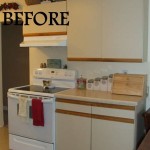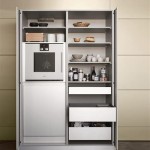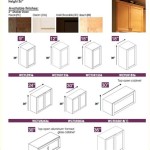Finishing Kitchen Cabinets: The Essential Guide
Choosing the perfect finish for your kitchen cabinets can significantly impact the overall aesthetic and functionality of your space. With various options available, it's essential to understand the properties, techniques, and considerations involved to achieve a flawless finish.
Types of Finishes
- Painted: Provides a customizable and versatile look with a wide range of colors and finishes.
- Stained: Enhances the natural grain of the wood, offering warmth and character.
- Lacquered: Creates a high-gloss, durable surface that reflects light and protects against moisture.
- Veneered: Adhesive-based thin sheets of wood applied to a substrate, allowing for exotic or expensive wood finishes.
Techniques for Finishing
- Brushing: Requires a steady hand and even strokes to avoid brush marks.
- Spraying: Provides a smooth, professional finish but requires proper ventilation.
- Rolling: Suitable for large surfaces, but requires careful application to avoid drips or bubbles.
- Wiping: Involves applying a diluted finish with a cloth or sponge, allowing for a more distressed or antique look.
Considerations for Choice
- Style: The finish should complement the overall design theme of your kitchen.
- Durability: Consider the level of wear and tear the cabinets will endure.
- Maintenance: Painted finishes require regular cleaning, while lacquered finishes are more stain-resistant.
- Lighting: The finish's reflectivity affects how light interacts with the space.
- Budget: Different finishes vary in cost, so consider your financial constraints.
Steps for Achieving a Flawless Finish
- Preparation: Properly clean and prepare the surface by sanding and removing imperfections.
- Priming: Apply a primer to ensure even paint or stain application and enhance adhesion.
- Applying Finish: Choose a technique based on the finish type and apply multiple thin layers.
- Drying: Allow sufficient drying time between coats and protect the surface from dust and debris.
- Finishing Touches: Add hardware, handles, or molding to complete the look and enhance functionality.
Maintaining Your Cabinets
- Regular Cleaning: Wipe down cabinets with a damp cloth to remove dirt and grime.
- Protection: Use coasters and placemats to prevent scratches and stains.
- Touch-Ups: Address any minor scratches or chips promptly to prevent further damage.
- Professional Cleaning: Consider periodic professional cleaning to restore the finish's luster.
Conclusion
Finishing kitchen cabinets is a crucial step in creating a beautiful and functional space. By understanding the different types of finishes, techniques, and considerations, you can choose the most suitable option for your needs. With proper preparation, application, and maintenance, your kitchen cabinets will remain an attractive and durable centerpiece for years to come.

The Most Durable Kitchen Cabinets And Cabinet Finishes

Kitchen Cabinet Finishes For Your Home Designcafe
8 Best Cabinet Finishes Paints Stains Glazes And More Vevano

8 Tips For A Professional Looking Finish On Your Cabinets Cabinetdoors Com

How To Choose The Best Kitchen Cabinet Finish

Kitchen Cabinet Finishes Cabinets Of The Desert

7 Types Of Kitchen Cabinet Finishes Kings

Basics Benefits And Drawbacks Of Matte Cabinet Finishes Awa Kitchen Cabinets

Kitchen Cabinet Finishes For Your Home Designcafe

How To Refinish Cabinets Like A Pro
Related Posts








